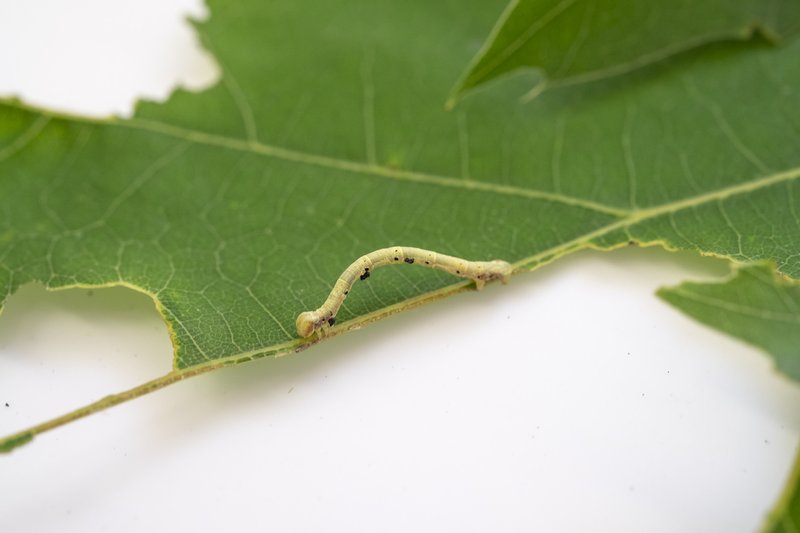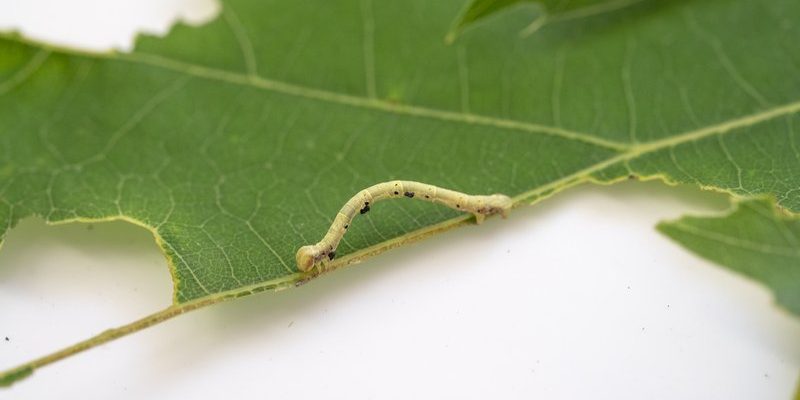
So, how do you go about it? Well, controlling inchworms organically means you’ll be using natural methods to manage their populations. Think of it as giving your garden a gentle yet effective hug. In this guide, I’ll walk you through several strategies to prevent and manage inchworm infestations, making sure you can keep your garden healthy and thriving. Whether you’re a seasoned gardener or just starting out, you’ll find practical tips and tricks you can use.
Understanding Inchworms: The Basics
First things first, let’s break down what inchworms are. Inchworms are actually the larvae of certain types of moths. They got their name because of the way they move, inching along like tiny caterpillars. They can be different colors, but green or brown is most common. You might spot them on the leaves of your plants, where they feed by chewing holes and causing unsightly damage.
The life cycle of an inchworm typically involves three stages: egg, larva (the inchworm stage), and adult moth. They usually hatch in spring and can be pretty voracious eaters during their larval stage. If they get out of control, those little nibblers can wreak havoc in your garden.
Knowing what you’re dealing with is half the battle. Identifying these pests early on can save you a lot of headaches later. Keep an eye out for signs like chewed leaves or the presence of the worms themselves.
Encouraging Beneficial Insects
One of the best ways to control inchworm populations organically is by encouraging beneficial insects to come hang out in your garden. Think of these insects as your garden’s natural bodyguards. Ladybugs, lacewings, and parasitic wasps are all great allies. They feast on inchworms and other pests, helping maintain a healthy balance in your garden.
To attract these helpful creatures, you could plant a variety of flowers and herbs. For instance, marigolds, dill, and fennel not only beautify your garden but also provide a haven for beneficial insects. It’s like hosting a garden party where your garden receives the ultimate protection from invaders.
Another idea is to avoid using pesticides. They can kill beneficial insects, too, leaving your garden vulnerable. Instead, focus on promoting a diverse ecosystem. The more variety you have, the better your chances of keeping inchworm numbers in check.
Handpicking Inchworms
If you’ve spotted a few inchworms munching away, don’t panic! Sometimes, the simplest solutions are the most effective. Handpicking is a direct and organic method that can keep their numbers down. Just put on some gloves and go for a little garden stroll.
Look for inchworms on the undersides of leaves or nestled in branches. They’re not very fast, so you can just pluck them off and toss them into a bucket of soapy water. This method works well if you have a small garden or just a few plants. Think of it as a mini treasure hunt, but instead of gold, you’re collecting pests!
However, this won’t completely eliminate the problem if you have a large infestation. But it can certainly help reduce their numbers. Plus, it gives you a chance to get familiar with your plants and spot any other issues that may need attention.
Using Organic Insecticidal Soap
If handpicking isn’t enough, you might want to consider using organic insecticidal soap. This solution is safe for the environment and won’t harm beneficial insects if used correctly. The soap works by suffocating the inchworms and disrupting their feeding habits.
To make your own insecticidal soap, mix about 2 tablespoons of pure liquid soap (not detergent) with a quart of water. Shake it up, and spray it directly onto the inchworms and affected leaves. Remember to cover the entire plant, as inchworms can hide in the crevices.
Here’s the thing: always test a small area first to make sure your plants don’t react negatively. Wait a day or two and observe. If all looks good, you can confidently spray the rest of your plants. This method is particularly effective when inchworms are young and still small.
Creating Physical Barriers
Another effective way to control inchworm populations is by using physical barriers. Think of these barriers as a protective shield for your plants. Row covers, for instance, can be placed over your vegetable beds to keep inchworms and other pests at bay without harming any beneficial insects.
You can also use sticky traps around the garden perimeter to catch adult moths before they lay eggs. These traps are often yellow or blue and stick to the surface, luring in unsuspecting pests. It’s a bit like putting up a fence—only this fence catches the “bad guys” while letting nature do its thing.
Additionally, make sure to clean up any fallen leaves or debris in your garden. Inchworms love to hide in these areas, so removing them can reduce hiding spots and help keep their populations low.
Promoting Plant Health
A healthy plant is a more resistant plant. Focusing on the overall health of your garden can make a big difference in controlling inchworm populations. A robust plant can withstand some nibbling without showing serious damage.
Start by ensuring your plants receive the right amount of water and nutrients. Over or under-watering can weaken them and make them more susceptible to pests. Consider adding compost or organic fertilizers to nourish your plants. It’s like giving them a nutritious meal that boosts their immune system!
Also, regularly check your plants for any signs of distress early on. That way, if inchworms or any other pests show up, you’ll spot them quickly and can act before they become a real problem.
Monitoring and Adjusting Your Strategy
Finally, remember that controlling inchworm populations is an ongoing task. Keep a close eye on your garden and adjust your strategies as needed. Different seasons can bring different challenges, and what works one year might not be as effective the next.
Don’t hesitate to try a combination of methods. For example, you can handpick inchworms while applying organic insecticidal soap and encouraging beneficial insects. It’s all about finding the right balance for your unique garden.
Also, take notes on what works and what doesn’t. This way, over time, you’ll develop a personal strategy that fits your gardening style and your local environment.
In conclusion, controlling inchworm populations organically doesn’t have to be a daunting task. With a bit of patience and the right approach, you can protect your garden while keeping it a safe habitat for beneficial insects. You’ve got this—happy gardening!

